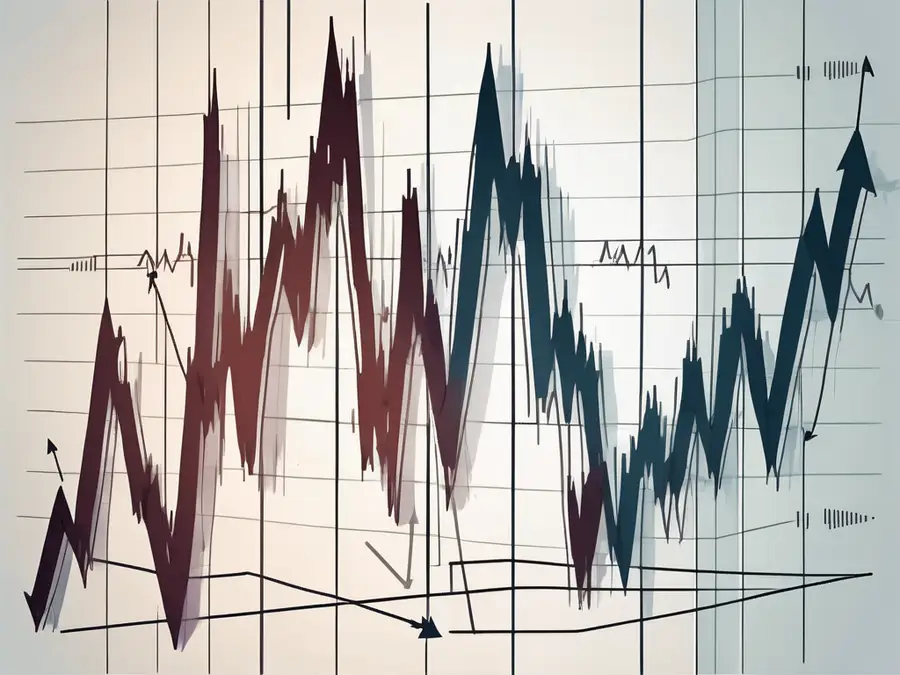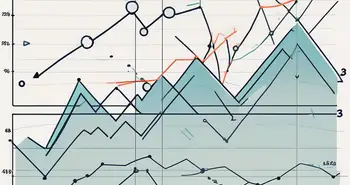The Art of Reversal Trading: Identifying and Capitalizing on Market Turnarounds

Reversal trading is a skill that separates successful traders from those who struggle to find consistent profits in the market. It's a technique that involves identifying potential market turnarounds and taking advantage of them for maximum gains. In this article, I will guide you through the art of reversal trading, from understanding the basics to implementing effective strategies.
Understanding Reversal Trading
Definition and Basics of Reversal Trading
Reversal trading, also known as contrarian trading, is a strategy that aims to capitalize on market reversals. Rather than blindly following the herd, reversal traders look for opportunities to go against the prevailing market trend. By identifying key reversal signals, such as trend exhaustion or a shift in investor sentiment, traders can enter positions with the potential for significant profits.
When it comes to reversal trading, timing is crucial. Traders must be able to recognize when a trend is nearing its end and be prepared to take action. This requires a deep understanding of market dynamics and the ability to interpret various technical indicators.
One popular approach to reversal trading is to use chart patterns. These patterns, such as double tops or head and shoulders, can provide valuable insights into potential trend reversals. Traders analyze the formation of these patterns and look for confirmation signals before entering a trade.
Another important aspect of reversal trading is risk management. Since traders are going against the prevailing trend, there is a higher level of risk involved. Proper risk management techniques, such as setting stop-loss orders and managing position sizes, are essential to protect against potential losses.
The Importance of Reversal Trading in the Market
Market reversals are an inherent part of any financial market. They offer lucrative opportunities for traders who can accurately predict when a trend is about to reverse. Reversal trading allows investors to enter positions at the early stages of a new trend, maximizing potential returns and reducing downside risks.
By being able to identify market reversals, traders can take advantage of price movements that others may overlook. This gives them a competitive edge and the potential for higher profits.
Moreover, reversal trading helps to bring balance to the market. It acts as a counterforce to the prevailing trend, preventing it from becoming too one-sided. This can contribute to a healthier and more sustainable market environment.
Reversal trading also plays a crucial role in providing liquidity to the market. When traders enter positions against the prevailing trend, they add depth and volume to the market, making it easier for other market participants to buy or sell their positions.
Furthermore, reversal trading can be a valuable tool for risk diversification. By incorporating reversal trading strategies into their portfolio, investors can reduce their overall exposure to a single market direction. This can help mitigate potential losses during periods of market volatility or unexpected events.
In conclusion, reversal trading is a strategy that offers unique opportunities for traders to profit from market reversals. By understanding the basics of reversal trading and its importance in the market, investors can enhance their trading strategies and potentially achieve greater success.
The Psychology Behind Market Reversals
Investor Sentiment and Market Trends
Understanding the psychology of market participants is crucial in reversal trading. Market trends are driven by the collective emotions of investors, such as fear and greed. When fear dominates, prices typically decline, offering buying opportunities for reversal traders. On the other hand, when greed prevails, prices often become overextended, signaling a potential reversal back to more sustainable levels.
Fear and Greed: Driving Forces of Market Reversals
Fear and greed play a significant role in market reversals. During periods of fear, investors sell off their holdings, causing prices to plummet. This creates an opportunity for reversal traders to purchase assets at discounted prices. Conversely, when greed takes over, investors become overly optimistic and push prices to unsustainable levels. Reversal traders can take advantage of this by selling assets at inflated prices before the market corrects itself.
Identifying Potential Market Reversals
Key Indicators of a Market Turnaround
Successful reversal traders rely on a combination of technical indicators and fundamental analysis to identify potential market reversals. Key indicators to watch include trendline breaks, divergences in momentum indicators, and significant changes in trading volume. These indicators, when used in conjunction with each other, can provide powerful signals of an impending reversal.
Technical Analysis Tools for Spotting Reversals
Technical analysis plays a crucial role in reversal trading. Tools such as trendlines, support and resistance levels, and moving averages help traders identify areas where a reversal is likely to occur. Candlestick patterns, such as dojis or engulfing patterns, can also provide valuable insights into potential market reversals. By combining these tools with solid risk management practices, traders can increase their chances of success.
Strategies for Capitalizing on Market Reversals
Timing Your Entry and Exit Points
Timing is everything in reversal trading. Getting into a position too early or too late can result in missed opportunities or significant losses. Successful traders use a combination of technical indicators and price action analysis to identify optimal entry and exit points. By waiting for confirmation of a reversal and setting appropriate stop-loss levels, traders can minimize risk and maximize potential profits.
Risk Management in Reversal Trading
Risk management is paramount in any trading strategy, and reversal trading is no exception. Set clear risk-reward ratios for each trade and stick to them religiously. Use stop-loss orders to limit potential losses and protect your capital. Remember, not every trade will be a winner, but by managing your risk effectively, you can ensure that your profits outweigh your losses in the long run.
Common Mistakes in Reversal Trading
Overconfidence and Other Psychological Traps
One of the most common mistakes in reversal trading is overconfidence. Just because a market has been trending strongly in one direction doesn't guarantee an immediate reversal. It's important to rely on objective indicators and analysis rather than gut feelings or emotions. Additionally, be aware of other psychological traps, such as the fear of missing out or holding onto losing positions for too long. Overcoming these biases is essential for success in reversal trading.
Misinterpreting Market Signals
Another pitfall in reversal trading is misinterpreting market signals. It's easy to get caught up in the noise of the market and mistake temporary price fluctuations for genuine reversals. Traders must carefully analyze the underlying factors driving the market and look for multiple confirmatory signals before making any trading decisions. By maintaining a disciplined approach and avoiding impulsive actions, traders can avoid falling into this common trap.
As an expert in reversal trading, I have personally witnessed the power of this strategy in generating substantial profits. One piece of advice I can offer is to never underestimate the importance of ongoing learning and practice. The market is constantly evolving, and staying up-to-date with the latest trends and techniques is crucial for consistent success.
FAQ
What is reversal trading?
Reversal trading is a strategy that involves identifying potential market turnarounds and taking advantage of them for maximum profits. It focuses on going against the prevailing market trend by recognizing key reversal signals.
How can I identify potential market reversals?
There are several methods for identifying potential market reversals. Technical indicators such as trendline breaks, divergences in momentum indicators, and changes in trading volume can provide valuable insights. Additionally, fundamental analysis and keeping an eye on investor sentiment are crucial for successful reversal trading.
What are common mistakes to avoid in reversal trading?
Two common mistakes in reversal trading are overconfidence and misinterpreting market signals. Overconfidence can lead to impulsive trading decisions, while misinterpreting market signals can result in entering or exiting positions at the wrong time. It's important to remain disciplined, rely on objective analysis, and avoid emotional biases.
By mastering the art of reversal trading, you can unlock a world of lucrative opportunities in the financial markets. Remember to approach each trade with a disciplined mindset, manage your risk effectively, and continuously hone your skills. With patience and dedication, you can become a successful reversal trader and capitalize on market turnarounds.
Ready to put your newfound knowledge of reversal trading into action? Look no further than Morpher, the revolutionary trading platform that's changing the game with blockchain technology. With Morpher, you can trade across a multitude of markets with zero fees, infinite liquidity, and the safety of a non-custodial wallet. Whether you're looking to invest fractionally, short sell without interest fees, or leverage your trades up to 10x, Morpher offers a unique trading experience tailored for the modern investor. Sign Up and Get Your Free Sign Up Bonus today to start capitalizing on market turnarounds with the innovative power of Morpher.

Disclaimer: All investments involve risk, and the past performance of a security, industry, sector, market, financial product, trading strategy, or individual’s trading does not guarantee future results or returns. Investors are fully responsible for any investment decisions they make. Such decisions should be based solely on an evaluation of their financial circumstances, investment objectives, risk tolerance, and liquidity needs. This post does not constitute investment advice.

Painless trading for everyone
Hundreds of markets all in one place - Apple, Bitcoin, Gold, Watches, NFTs, Sneakers and so much more.

Painless trading for everyone
Hundreds of markets all in one place - Apple, Bitcoin, Gold, Watches, NFTs, Sneakers and so much more.









